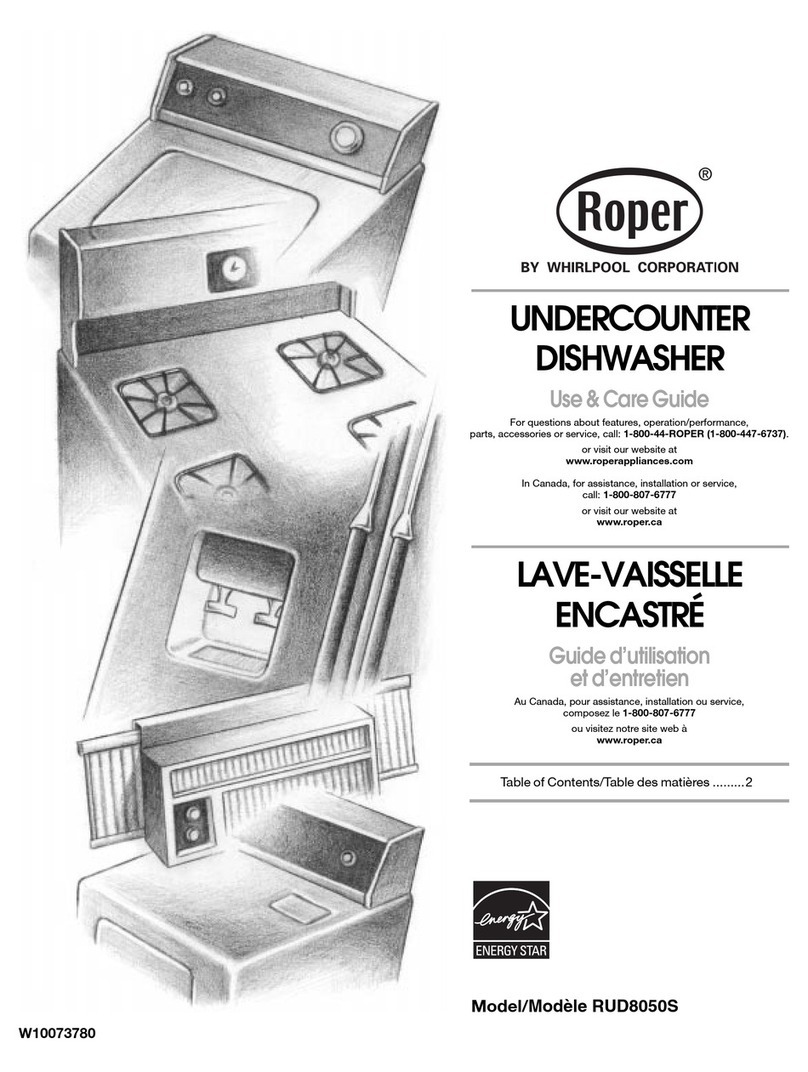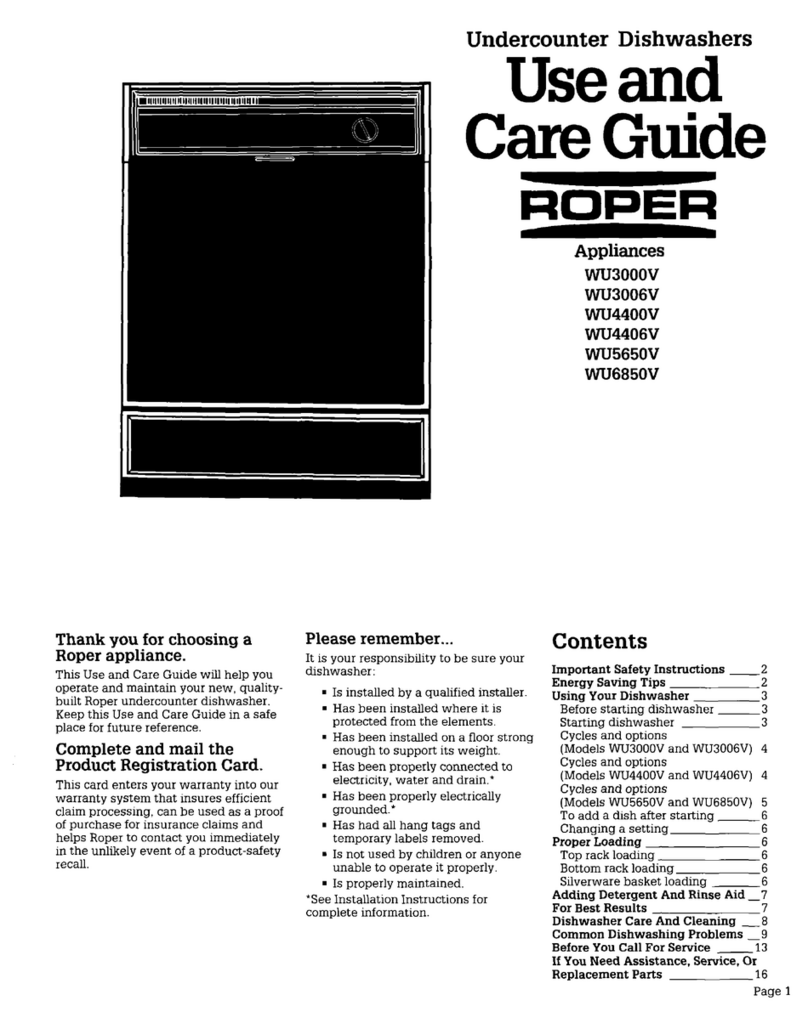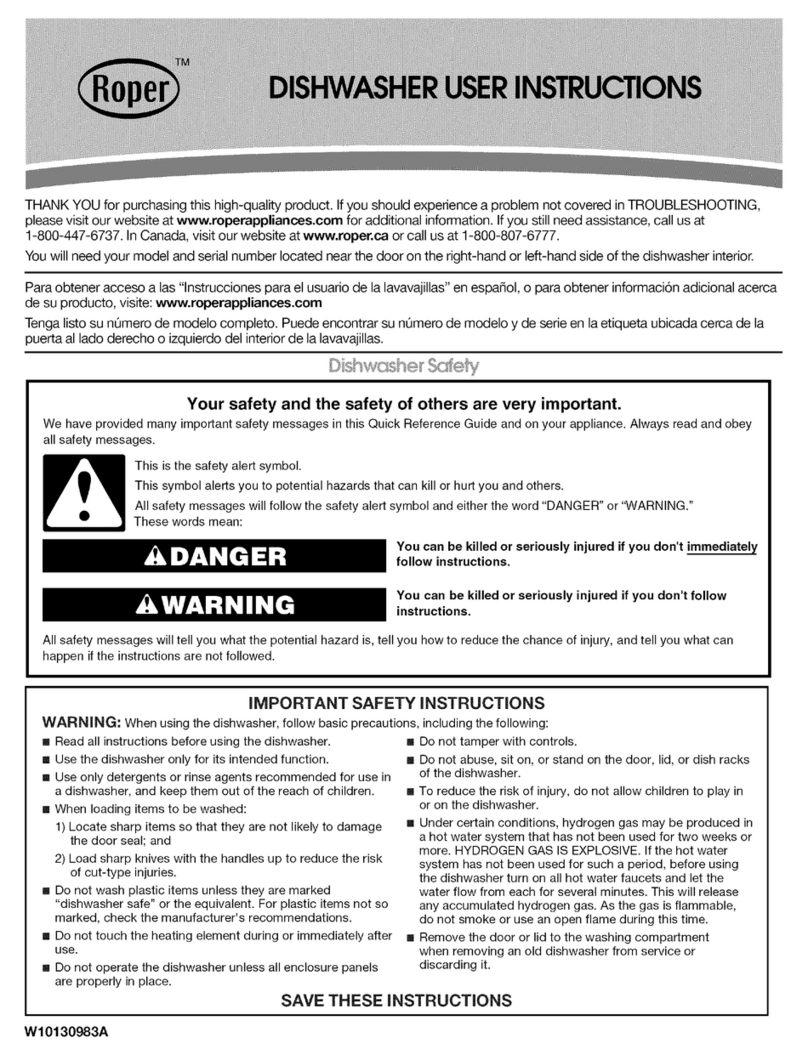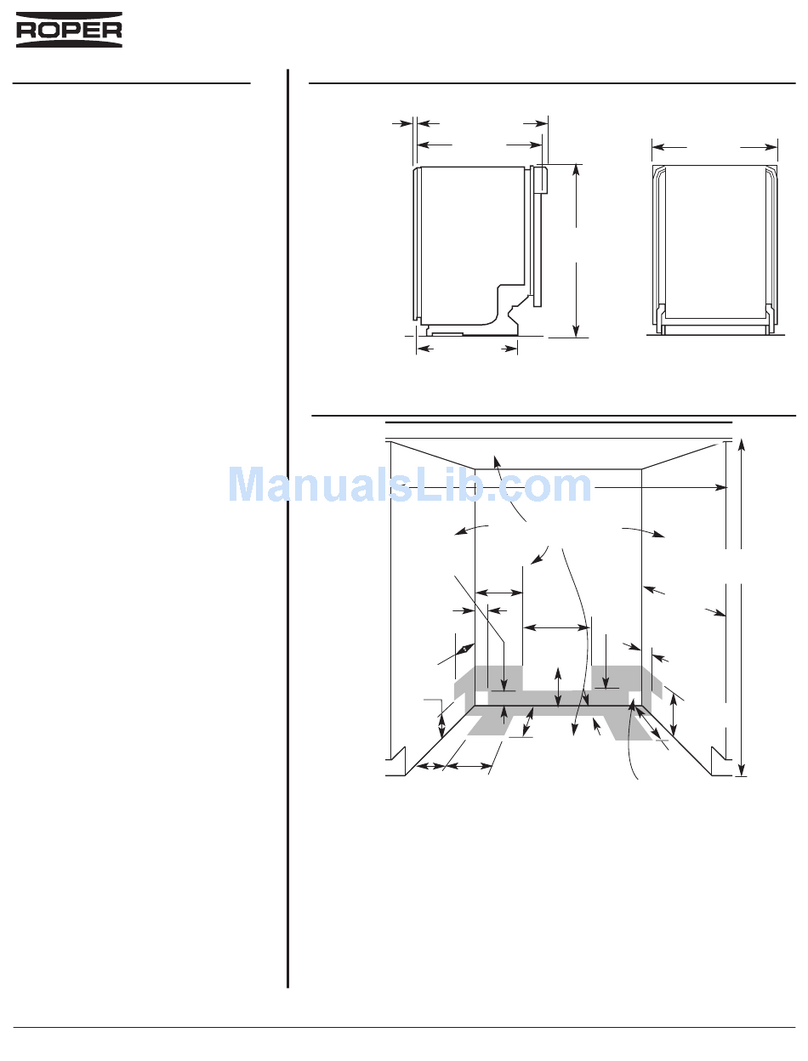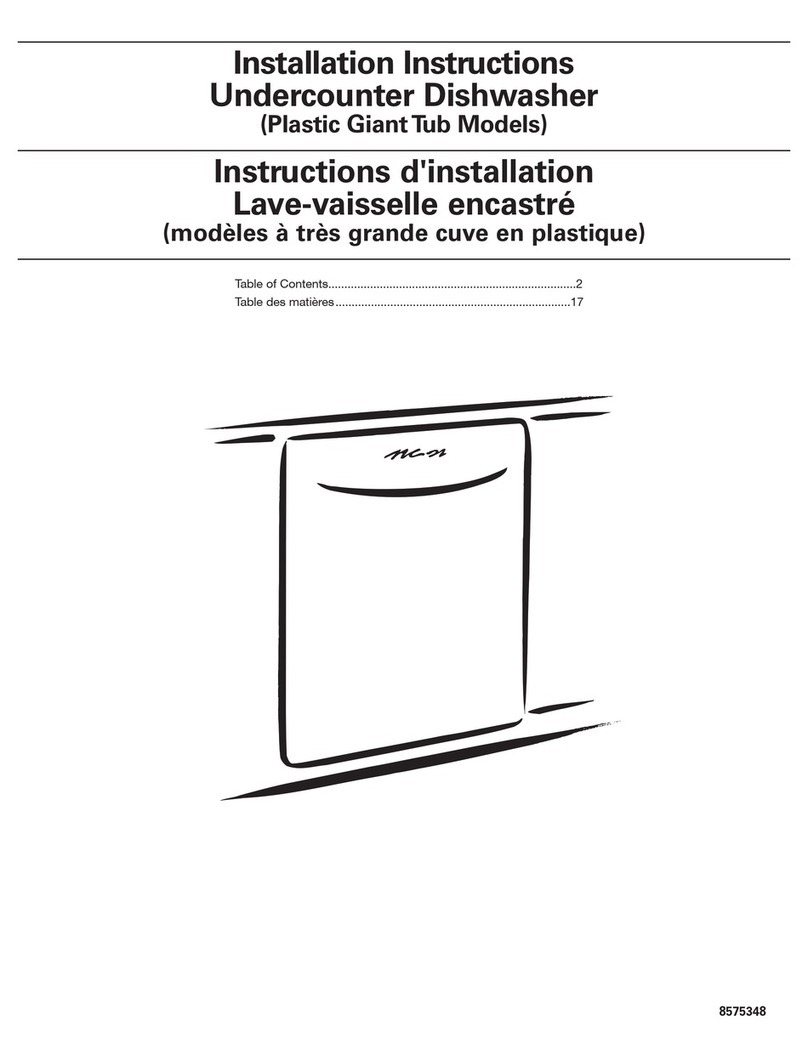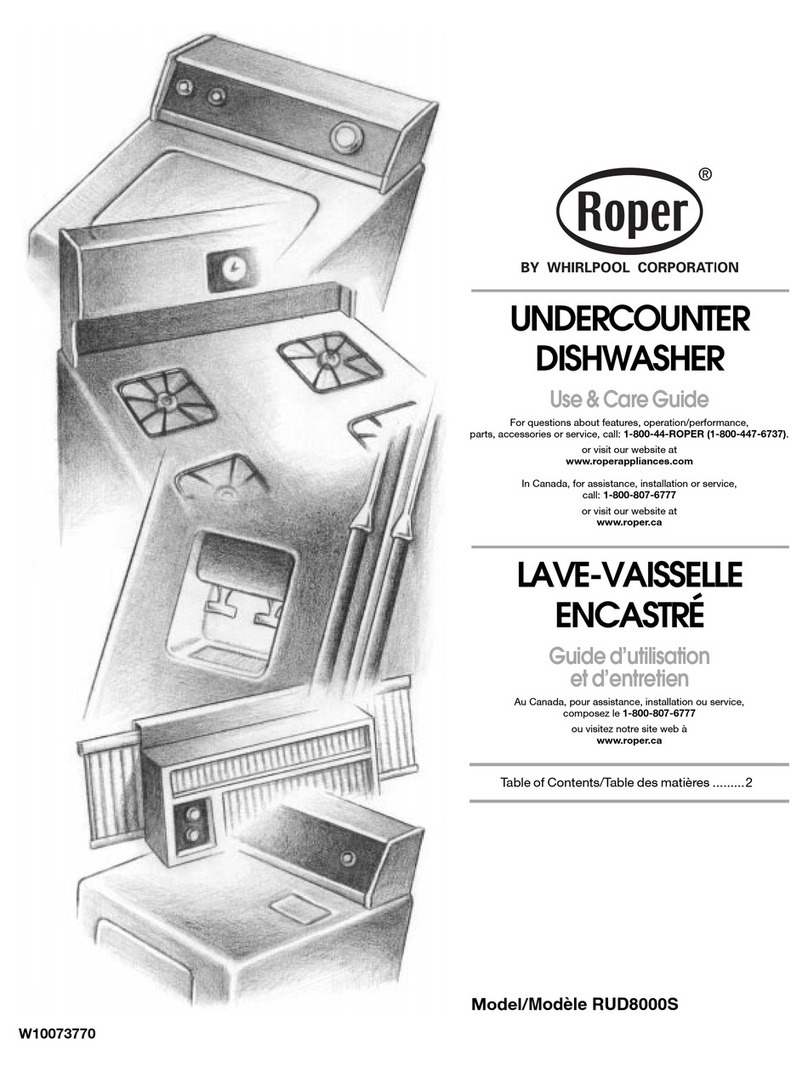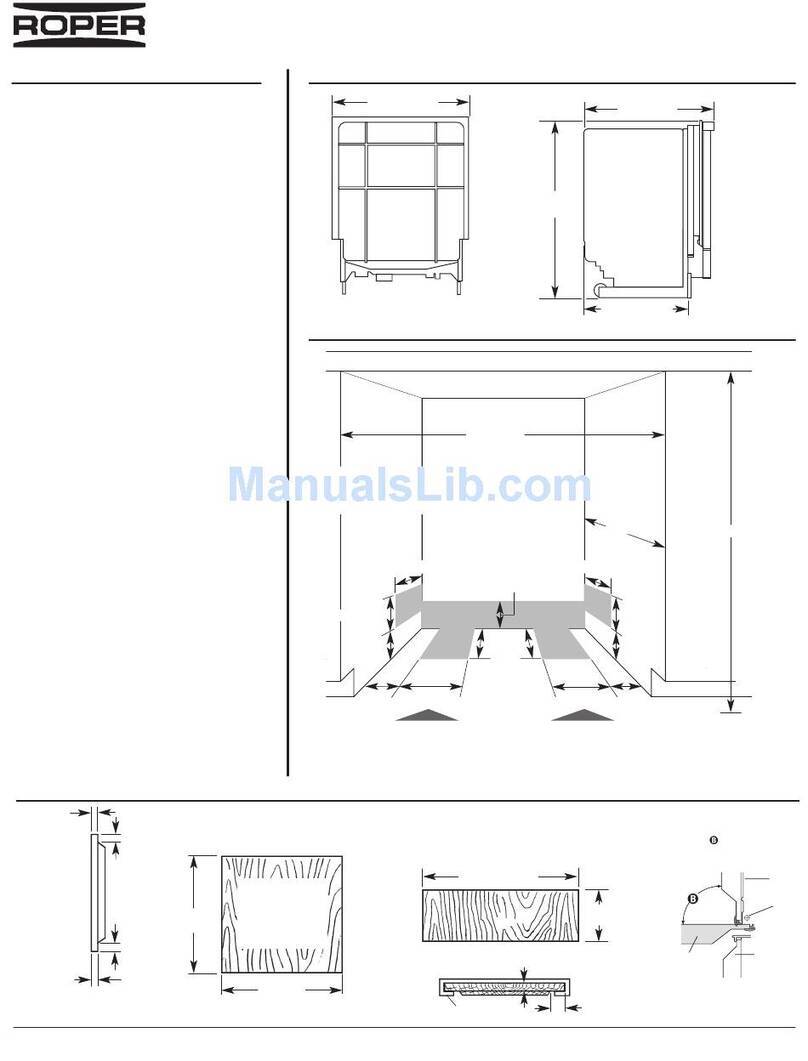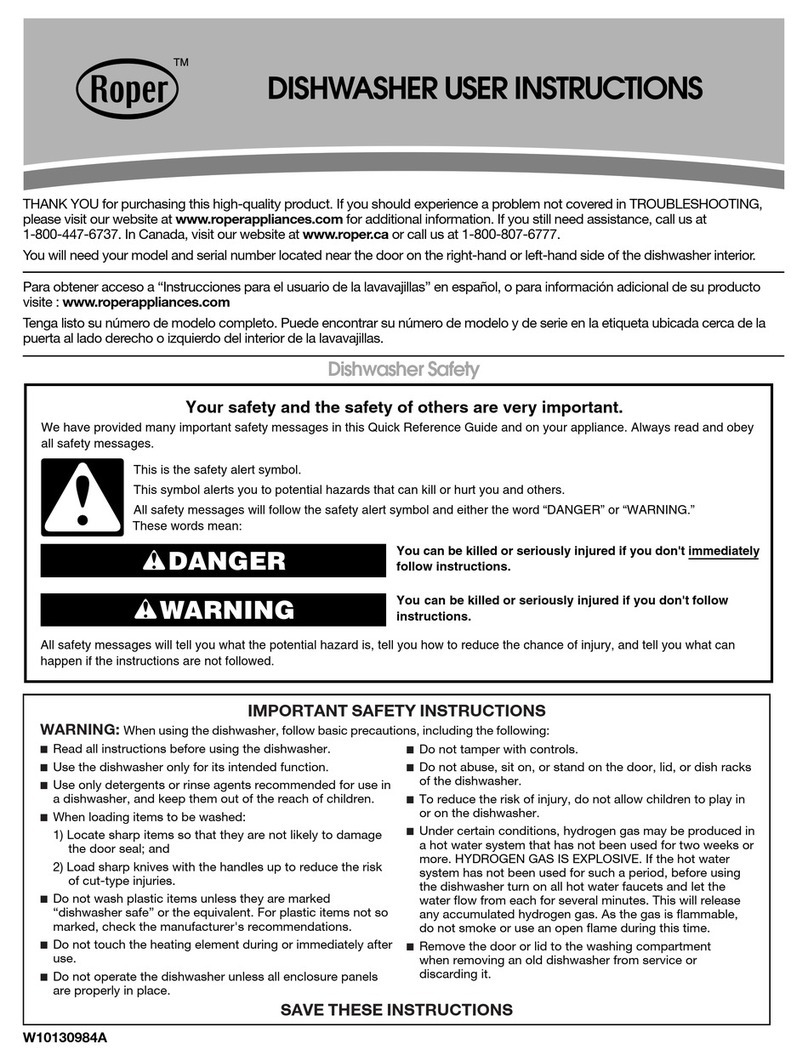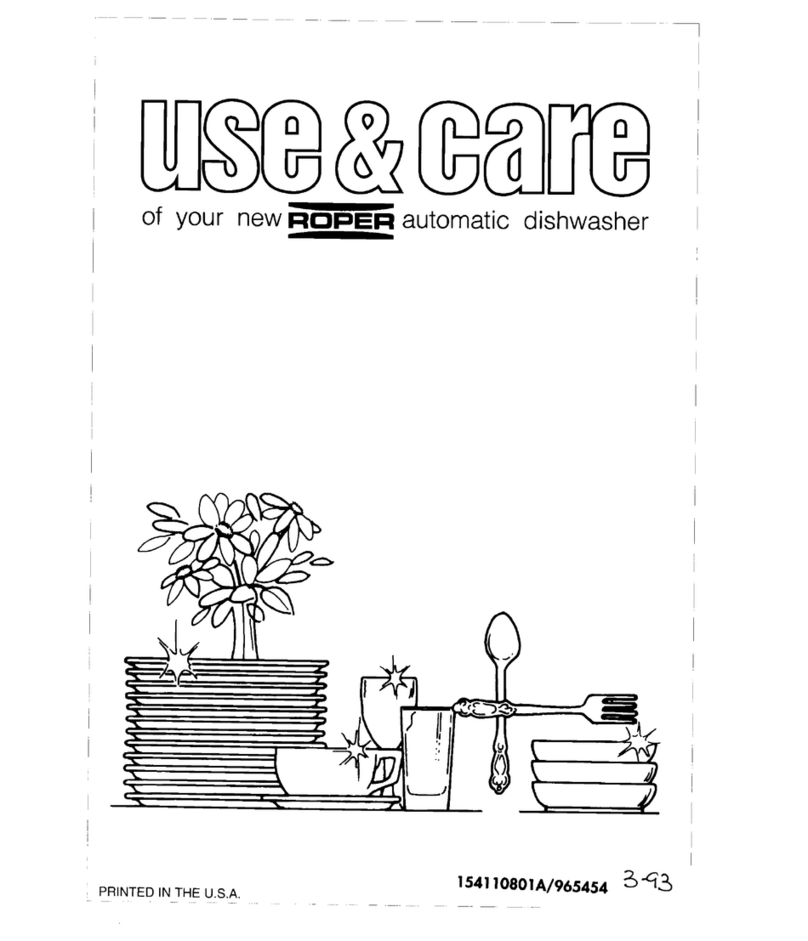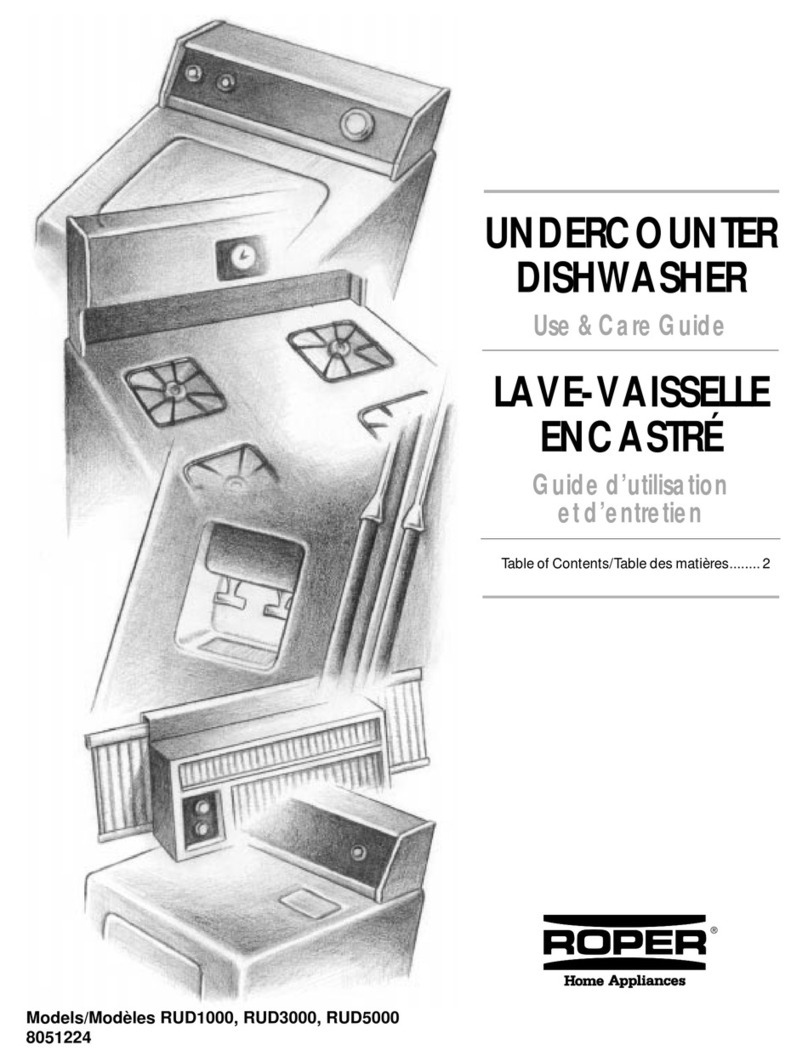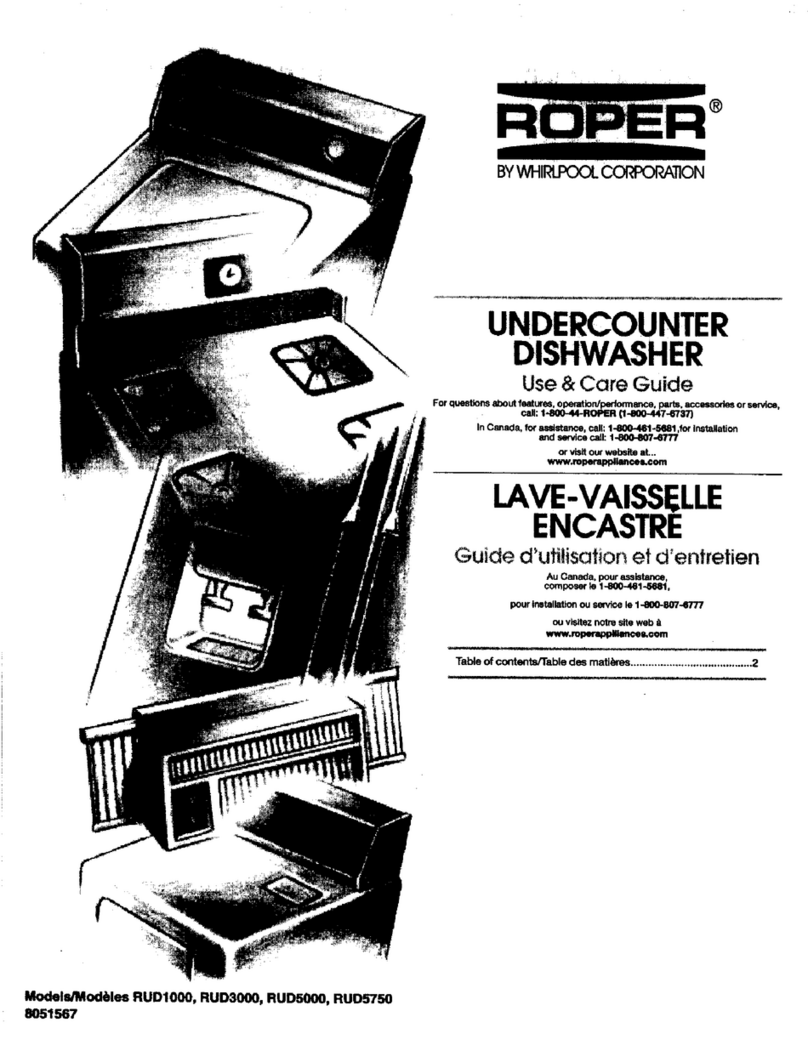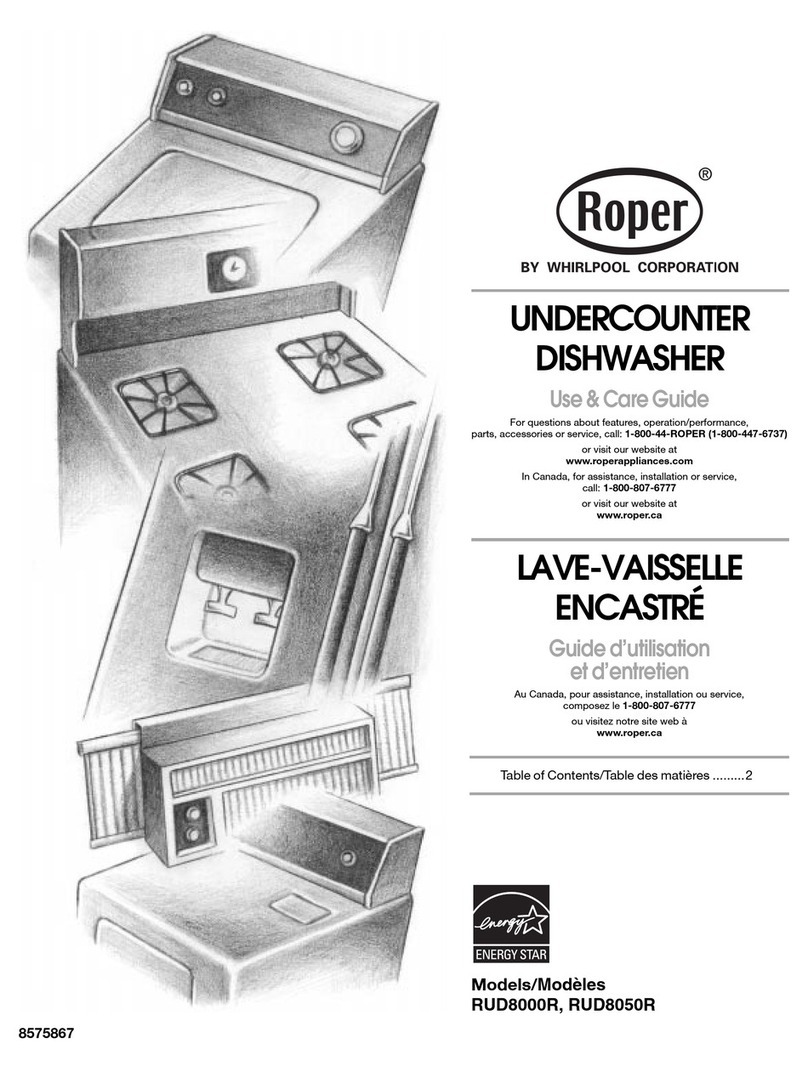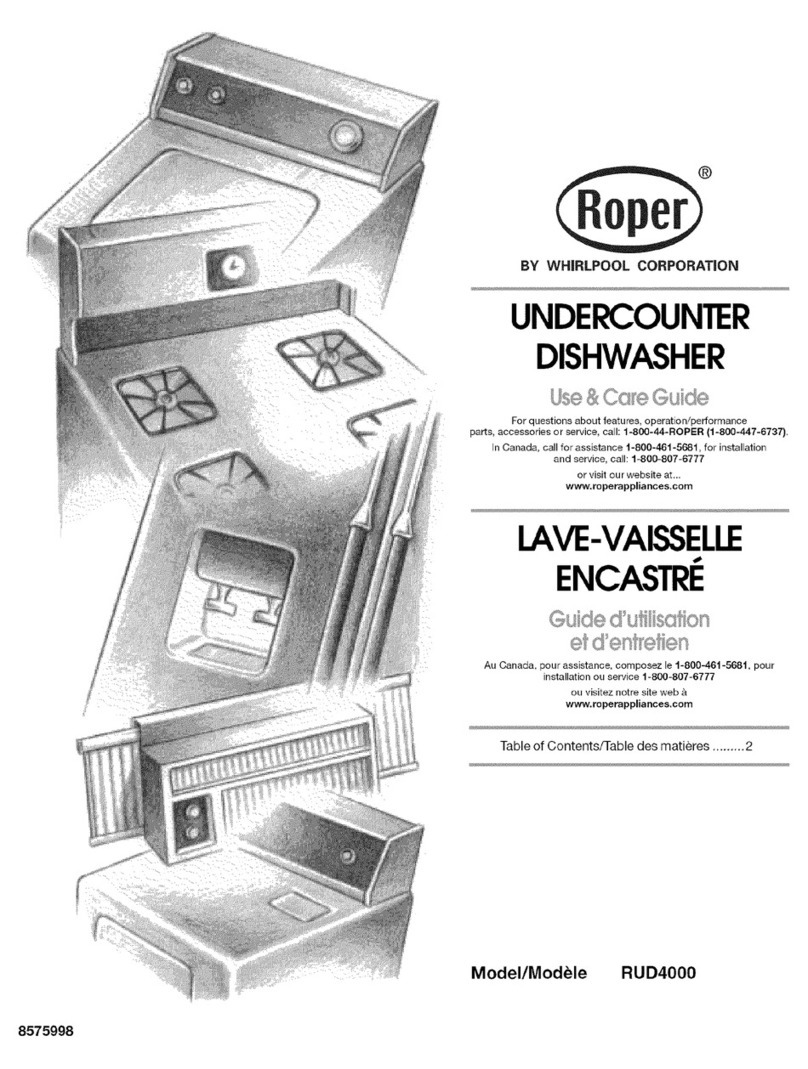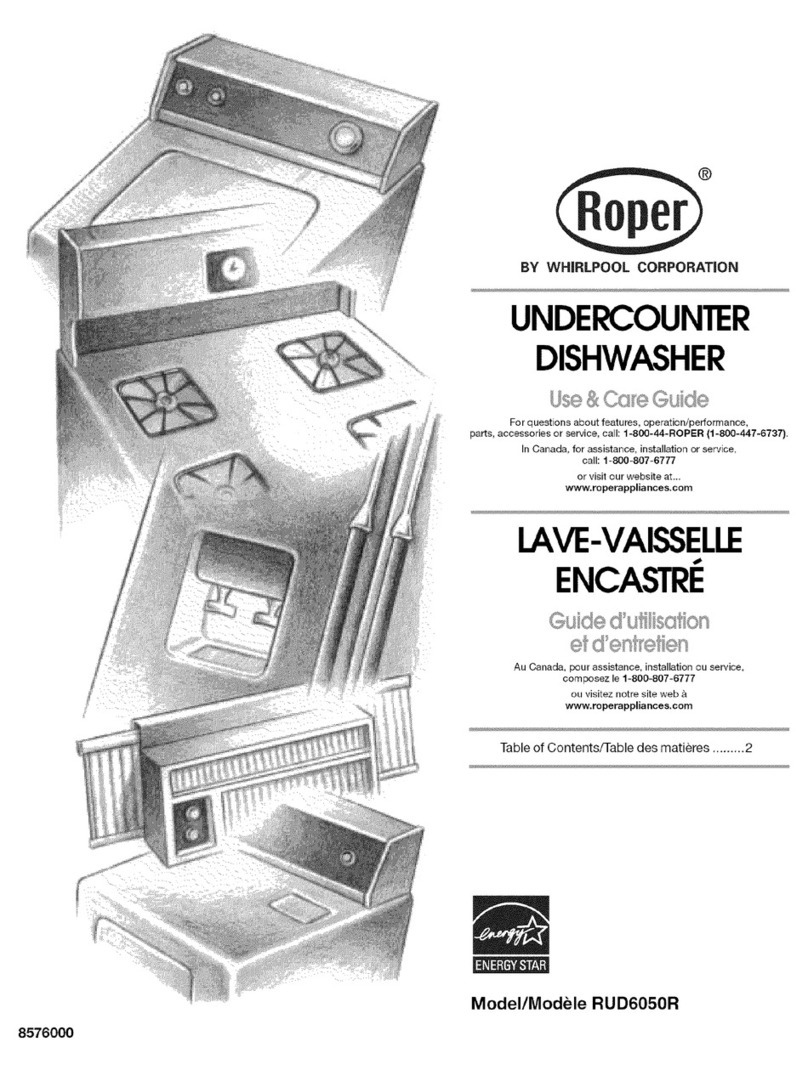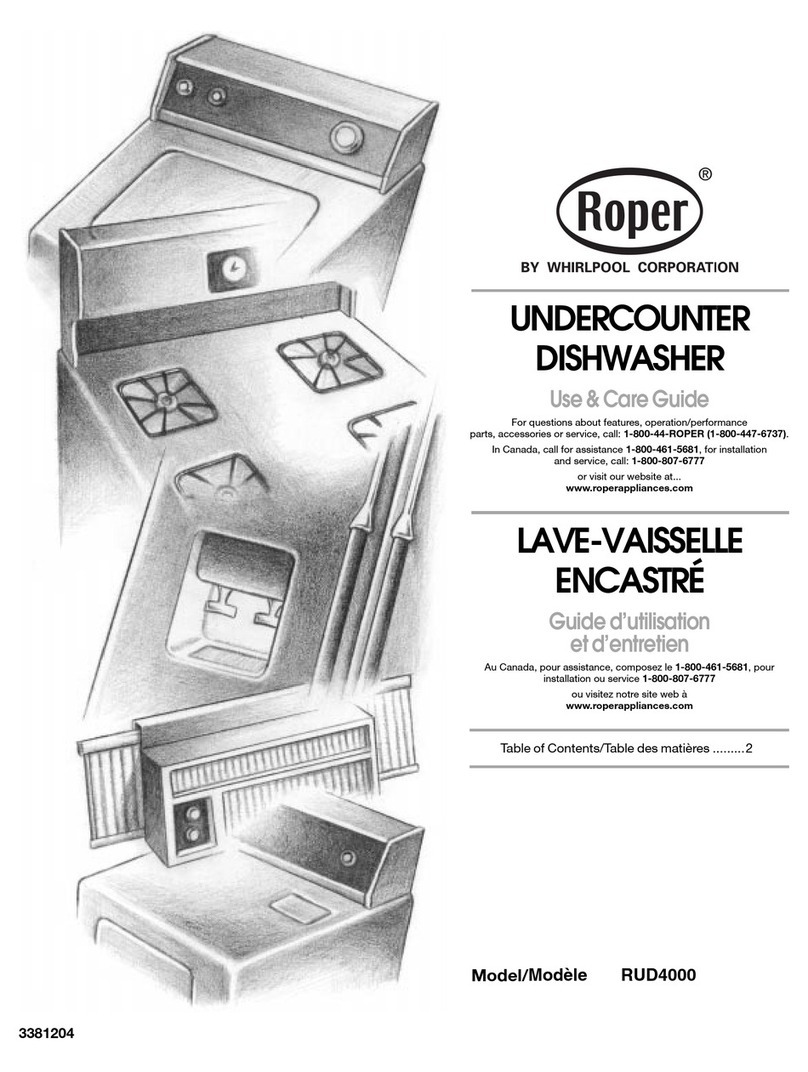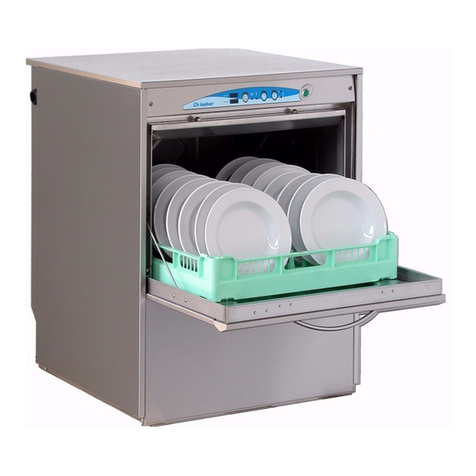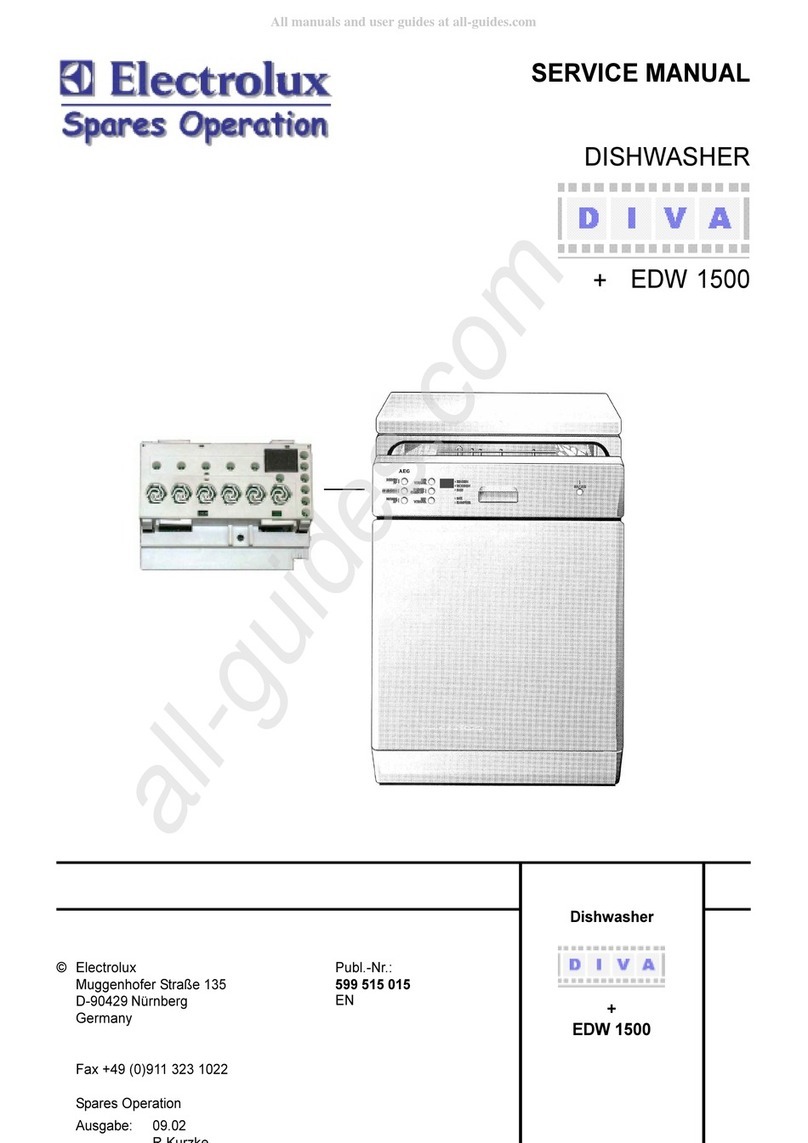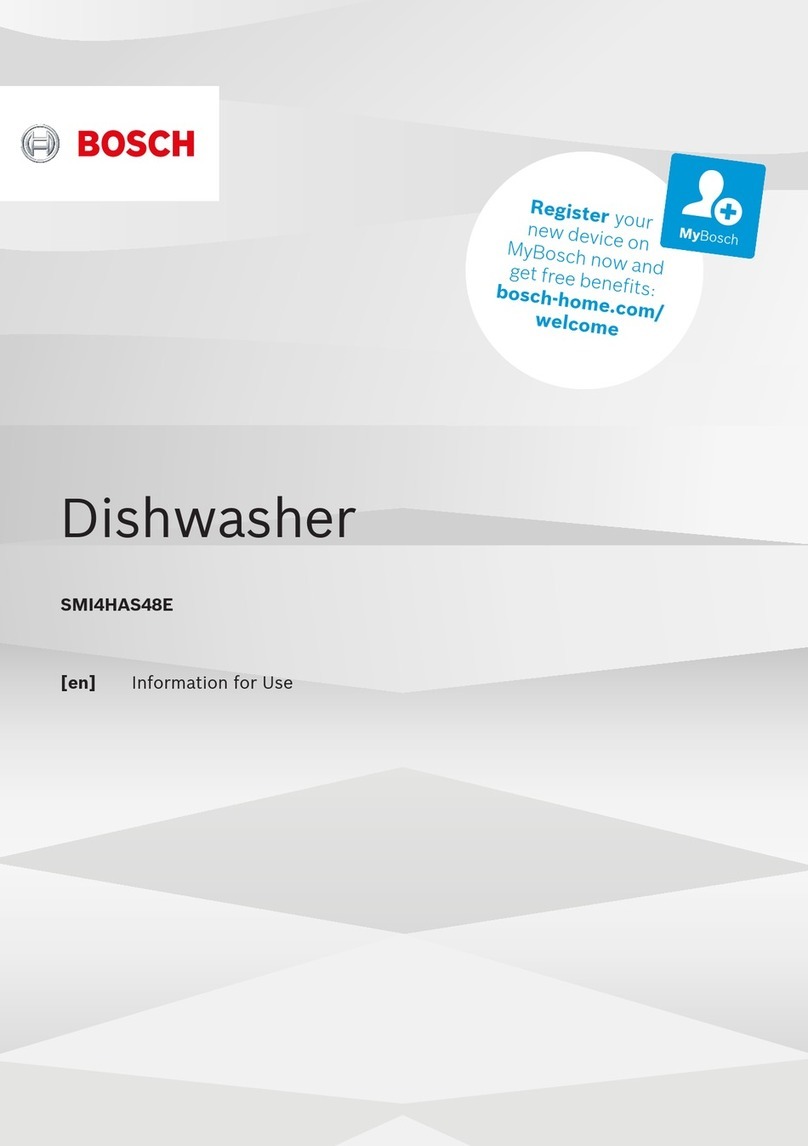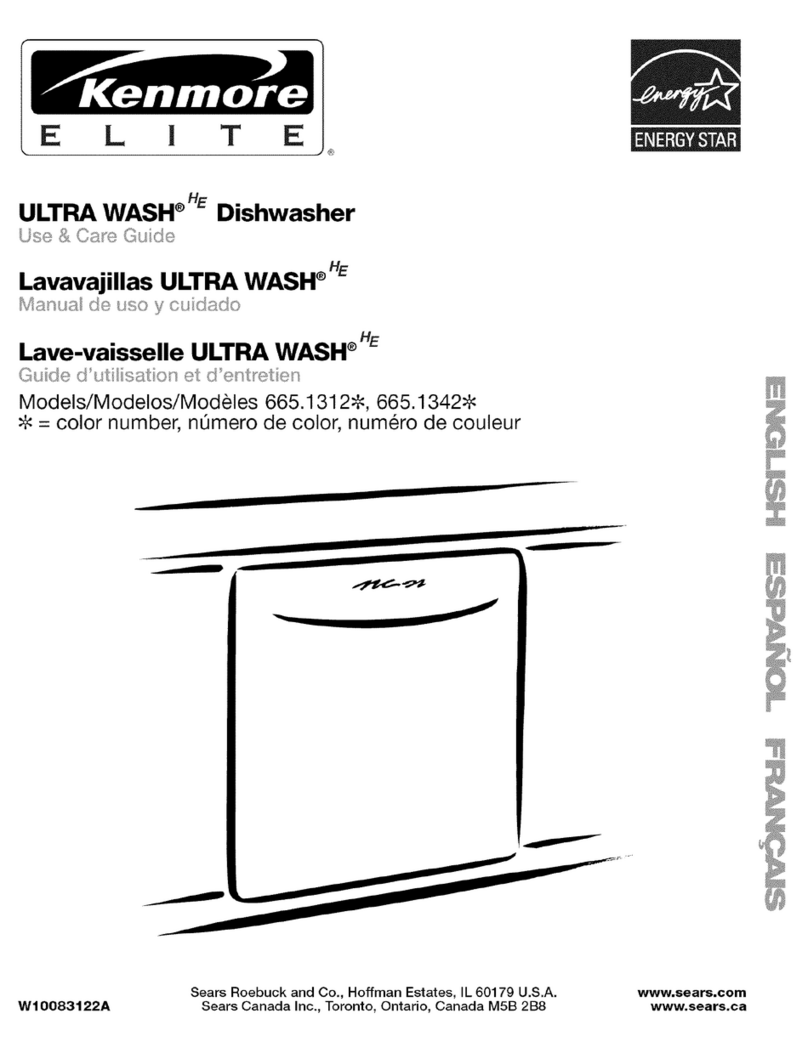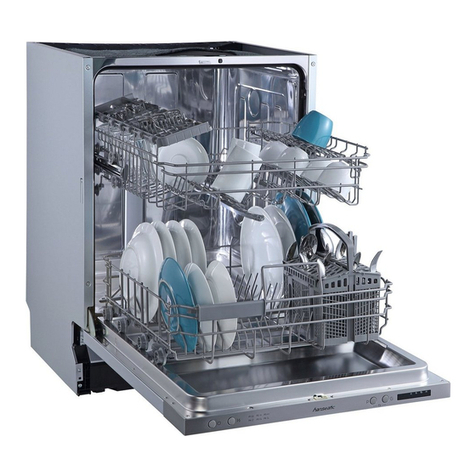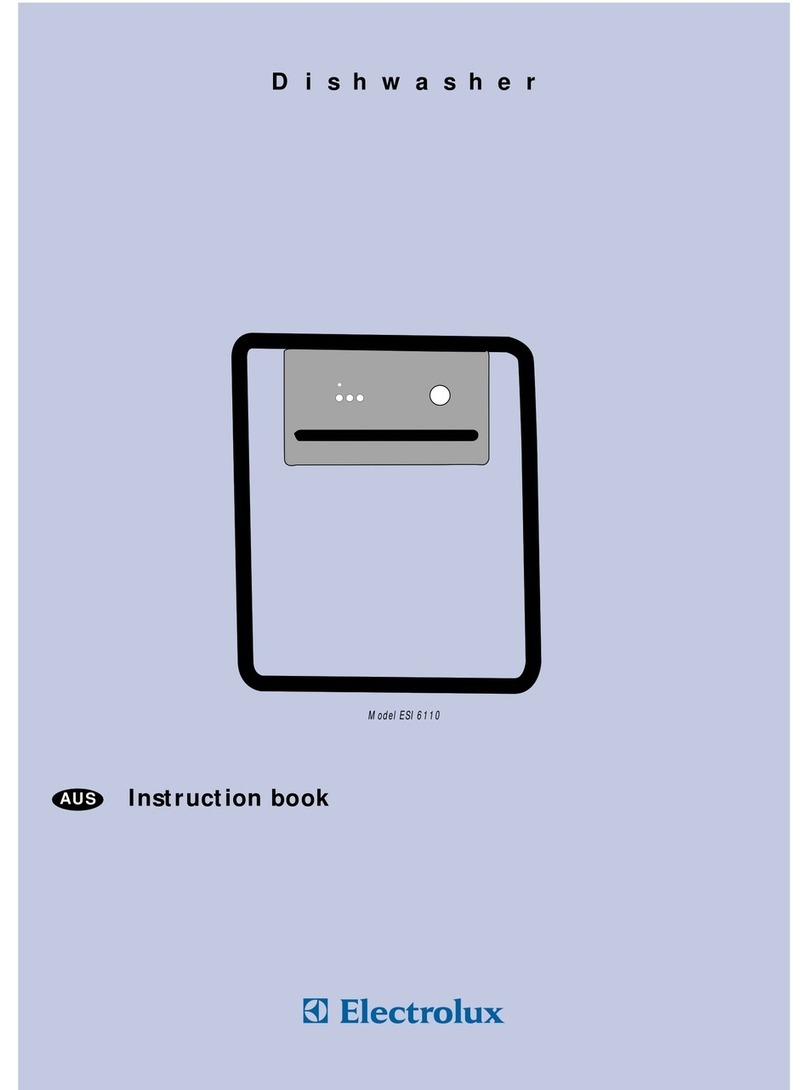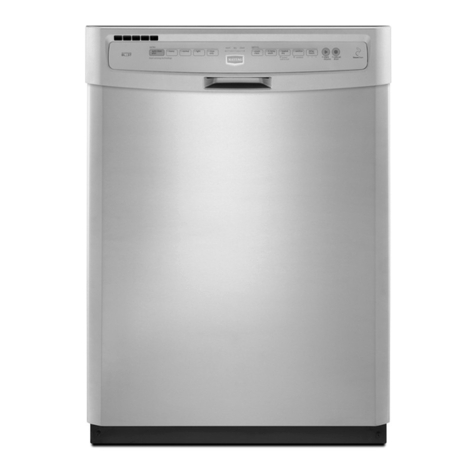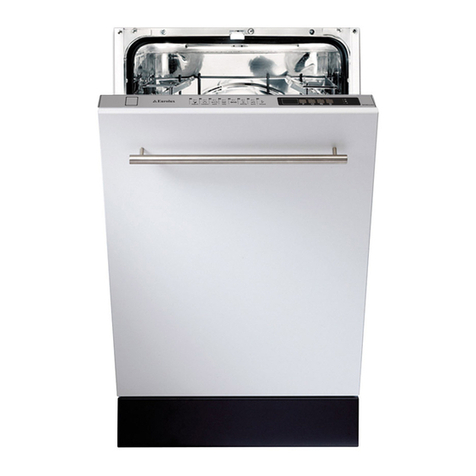Important Safety Instructions
To reduce the risk of fire, electriil shock, or injury when using
your dishwasher, follow basic precautions including the following:
*Read all instructions before using the
l
DO NOT wash plastic items unless
dishwasher. marked “Dishwasher Safe” or the equiva-
*Use your dishwasher only for the uses lent. If not marked, check manufacturer’s
described in this manual. recommendations.
*DISHWASHER MUST BE ELECTRI-
l
DO NOT use your dishwasher unless all
CALLY GROUNDED. Read the Installa- enclosure panels are properly in place.
tion Instructions for details.
l
DO NOT sit on, stand on or abuse the
*When discarding an old dishwasher, dishwasher door or dish racks.
always remove the door to prevent
l
DO NOT tamper with controls.
accidental entrapment or suffocation.
l
If hot water has not been used recently
*Use ONLY detergents and rinse agents
recommended for use in a dishwasher. (usually two weeks or longer), hydrogen
gases may build up in the water heater
*Store dishwasher detergent in a cool, dry and the hot water pipes. HYDROGEN
place WHERE CHILDREN CAN’T GAS IS EXPLOSIVE. To prevent injury
REACH IT. or damage, before using your dish-
*When loading items to be washed: washer, turn on all hot water faucets and
- Load sharp items and knives with the allow water to run for several minutes.
handles up to reduce risk of cut-type This will allow gases to escape. Do not
injuries. smoke or use any open flame near the
faucet while it is open.
- Locate sharp items and knives so that
they are not likely to damage the door
l
DO NOT store or use gasoline or other
or tub. flammable vapors and liquids in the
@DONOT let children play in or on the vicinity of this or any other appliance.
The fumes can create a fire hazard or
dishwasher. explosion.
.DO NOT reach into the area below the
bottom rack until the heating element has .Disconnect electrical power to the
cooled for at least 20 minutes. dishwasher before attempting to service.
- SAVE THESE lNSTRUCTlONS -
Help us help you
Please:
l
Have your dishwasher installed by a
l
Remove all shipping plugs from hoses and
qualified installer. connectors (such as drain connector on a
l
Install where dishwasher is protected from disposer) before installing.*
the elements.
l
Remove all hang tags and temporary labels.
l
Install and level dishwasher on a floor that
l
Make sure dishwasher is not used by
will hold the weight, and in an area suitable anyone unable to operate it properly.
for its size and use.
l
Properly maintain dishwasher. See page 18.
l
Property connect dishwasher to electricity,
water and drain.*
l
See Installation Instructions for complete information.
3




















